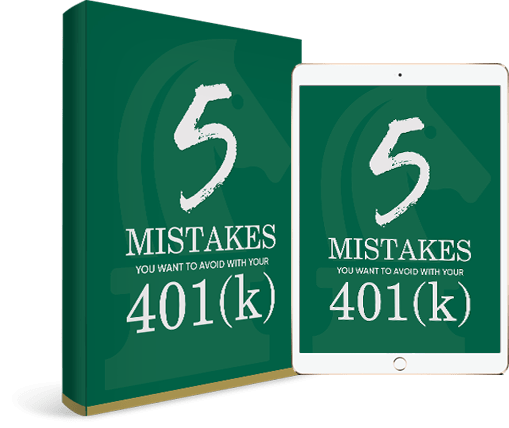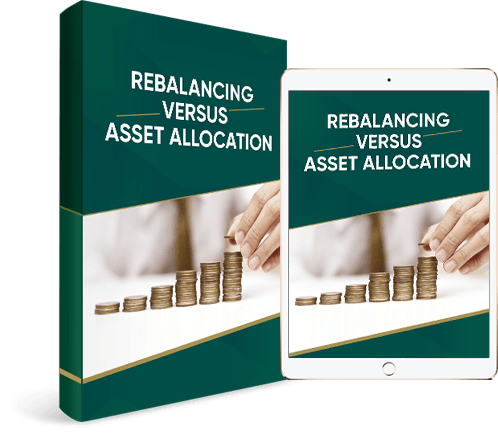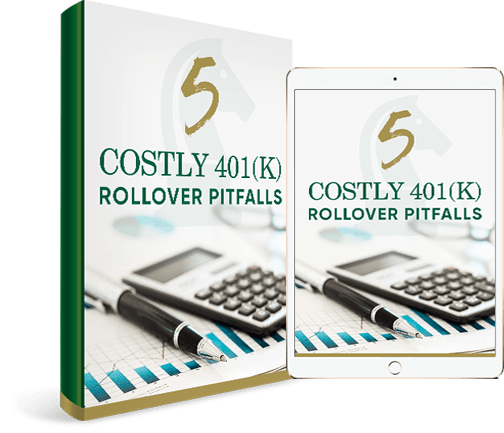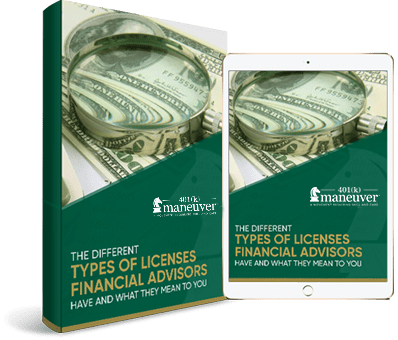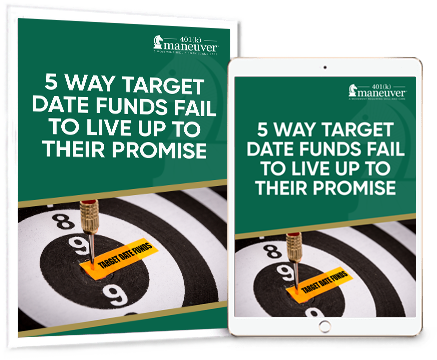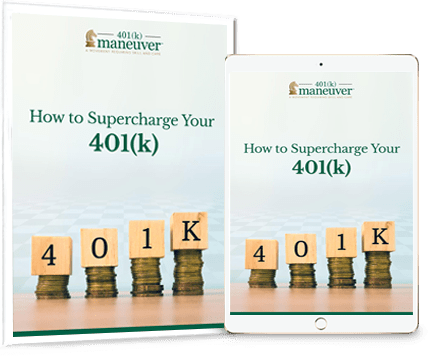
Tired of Retirement Savings Stress? These 5 Moves May Help.
Saving for retirement can feel overwhelming – especially with headlines constantly reminding us about rising healthcare costs, tariffs, and a volatile market.
But here’s the thing: Most retirement savings stress often comes from uncertainty – not from your actual financial position.
The good news?
You can take steps today that not only help you save more effectively but also ease some of the anxiety that comes with planning for retirement.
Here are 5 practical ways to reduce retirement savings stress and take more control over your financial future.
#1 Know What You’re Really Up Against

One of the biggest sources of retirement savings stress is simply not knowing how much you’ll need in retirement…or whether you’re on track.
The fear of not saving enough may be one of the top things keeping pre-retirees up at night.
According to Fidelity, “Among pre-retirees, 62% are uncertain whether their retirement savings will last forever, and a majority remain wary of the rising cost of health care and what portion of their income will be covered by Social Security.”¹
This may sound obvious, but many people fail to set a plan for retirement.
And failure to plan is often a stressor when it comes to saving for retirement.
With rising healthcare costs, taxes, volatile markets, and the rising cost of living, one thing is certain…
If you don’t have a plan and take action on that plan, you’re likely not going to have enough to retire.
Or worse, you’ll end up with so little saved that you might have to struggle to survive or have to rely on your kids to support you.
Let’s say you have a $325,000 average balance at retirement and you are making $63,000 per year when you retire.
How long are these funds going to last you in retirement?
Will this give you the retirement you truly desire? For most, the answer is no.
Here is what you can do to get a plan in place…
- Take the time now to create a plan for retirement. If you created a plan years ago, but haven’t followed it, then hit the reset button and start planning.
- Ask yourself at what age you want to retire. How much money will you need to create the income you’ll need in retirement? Write it down.
- Look at how much you’ve saved already compared to what you need, and then figure out how much you need to save each pay period to achieve that goal.
Don’t get discouraged if your 401(k) balance is low.
The point is, knowing your target can make it easier to form a plan – and helps eliminate the “what if” spiral that leads to stress.
If you get stuck or are unclear, we recommend you reach out to a professional for help sooner rather than later.
Once you have a plan in place, make sure to review your progress quarterly or at least once a year to see if you’re still on track.
#2 Focus on What You Can Control

There’s a lot about retirement that’s out of your hands – market dips, inflation, Social Security changes, and global events.
And if you focus too much on these, it can create a ton of unnecessary retirement savings stress.
That’s why one of the smartest ways to reduce retirement anxiety is to zero in on the things you can control.
Start with your savings rate.
Are you able to bump up your contributions?
Even a 1% increase each year may make a noticeable difference over time.
For 2025, the 401(k) contribution limit is $23,500, and, if you’re 50 or older, you can save up to $31,000.
Next, check your spending.
Are there areas where you could cut back and redirect those dollars toward retirement?
Trimming $50 a week from dining out or online shopping adds up to $2,600 a year.
That’s $2,600 that could be earning and compounding instead of disappearing into your day-to-day expenses.
Also, if you’re investing your savings (and we hope you are), make sure your risk level matches your retirement timeline.
The more you build systems to support your retirement goals, the less energy you may waste worrying about things you can’t control.
#3 Automate Good Financial Habits

We feel one of the best ways to reduce decision fatigue and lower your financial stress is to automate your savings and investment habits.
Because, when you rely on willpower, you’re typically more likely to make reactive or emotional decisions, especially when the market dips or life gets hectic.
You already automate your 401(k) contributions, which means you’re paying yourself first without even thinking about it.
That money comes out of your paycheck before you see it, making it easier to live within your means and prioritize long-term savings.
Do the same thing for your savings.
Automate paying your bills.
Also, schedule recurring reminders to check your 401(k) performance.
If you trash or dump your investment statements when they come in the mail or email, stop.
Although reviewing the statement for your 401(k) plan or IRA might not be the most exciting read, we feel it is important that you have a good understanding of the information that is provided to you.
Here are 2 reasons why we recommend you make it a point to open and read your statements:
- See how your 401(k) or IRA is performing.
- Understand what you are paying in fees.
This is the part of your retirement that you control.
If you have a 401(k), we encourage you to take a few minutes to watch this tutorial on how to read and understand your statement.
In our opinion, when you build systems that run in the background, you stay consistent – and consistency is key to successful retirement planning.
#4 Stop Comparing Yourself to Everyone Else

Another often-overlooked stressor? Comparison.
It’s easy to fall into the trap of comparing your savings to friends, coworkers, or influencers online.
You might hear someone talking about retiring early, buying a second home, or maxing out their accounts effortlessly – and suddenly feel as if you are way behind.
But here’s the truth: You don’t know their full financial picture.
You don’t know their debts, expenses, family obligations, or what sacrifices they’ve made.
The retirement savings journey is personal.
Rather than measuring yourself against others, measure your progress against your own goals.
Are you saving more than you did last year?
Are you contributing consistently?
Are you building a future that reflects your version of a good retirement?
If so, you’re most likely on the right track.
Confidence in your financial path doesn’t come from keeping up with others – it usually comes from knowing you’re making thoughtful decisions that align with your life and priorities.
#5 Seek Professional Help

Retirement planning can be complex.
And for many people, that complexity can be a major source of stress.
Yet too many people avoid getting help – either because they think it’s too expensive, too time-consuming, or they just feel embarrassed by what they don’t know.
But here’s the thing: You don’t need to be a financial expert.
You just need to be proactive.
Working with a fiduciary may provide the clarity and confidence you’re missing.
A professional can help you build a plan tailored to your financial situation, helping to optimize your 401(k) performance and potentially avoid costly mistakes.
If you still aren’t certain, consider this: Professional 401(k) management help has been shown to increase 401(k) investors’ returns.
In a 2019 study titled Advisor’s Alpha, The Vanguard Fund Group, Inc., reported a 3% average increase in the value of portfolios of clients who have their accounts professionally managed.²
If you’re hesitant to reach out for advice because you think your account balance isn’t big enough, or you think you’re too close to retirement to get help, don’t let that stop you.
Have questions or concerns about your 401(k) performance? Book a complimentary 15-minute 401(k) Strategy Session with one of our advisors.
Sources:
- https://newsroom.fidelity.com/pressreleases/fidelity-investments–research–while-over-70–of-retirees-say-retirement-is-going-as-planned–confi/s/d9799b30-b28e-4b8b-842e-ca2d8fcd143d
- https://www.investopedia.com/articles/personal-finance/102616/how-much-can-advisor-help-your-returns-how-about-3-worth.asp



